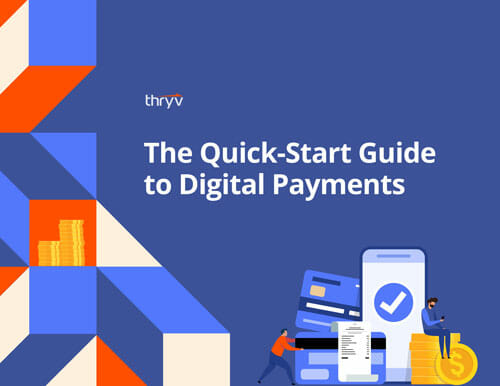Identifying the pricing sweet spot for your services is a delicate balancing act. Set prices too high, and you could drive customers away and lose a sale. On the other hand, if you don’t charge enough, business may be booming but you won’t meet your revenue goals.
The sweet spot is the price that helps you have a steady business, cover your costs and bring in revenue.

The Quickstart Guide
to Digital Payments
Find everything you need to know about collecting payments, processing payments, late payments, and more in this free resource.
How to Set Prices for Services
Unfortunately, there isn’t a perfect formula that identifies down to the penny what you should charge for your services. As a general rule of thumb, your price should cover your total labor and material costs plus your desired profit margin.
But whether you’re a lawyer or contractor, we know you offer way more than labor and materials alone. Years of experience and your expertise are worth a lot. It’s all about knowing the value you provide and pricing accordingly.
3 Master Strategies for Raising Your Prices
Here’s what you need to keep in mind.
The Pricing Sweet Spot is a Moving Target
Once you determine your set price, that doesn’t mean it’s set for good. What worked two years ago might not work for you now.
Three key factors can affect what you decide to charge:
Increasing Inflation Rates
Inflation is a loss of purchasing power over time, typically a year. In layman’s terms, it means your money won’t go as far tomorrow as it did yesterday.
On average, the inflation rate is around 2%-3%. That means the products and materials your service requires would be 2%-3% more expensive this year than last.
But right now, the inflation rate is more than 8% — a 40-year high. This is causing many small businesses to raise their rates.
It’s important you quote prices that keep up with inflation. This will ensure your profit margin is strong, and you can keep your business afloat.
Consumer or Market Demand
If your business has become so busy you can barely keep up, raising prices can ease your workflow without losing revenue.
According to Forbes, your prices may be too low if your customer conversion rate (the percent of prospects who convert to customers) is over 80%. Ideally, this number should be closer to the 75%-80% range.
Alternatively, if you’re sitting around twiddling your thumbs and not hitting revenue goals, you may want to consider dropping your price or offering limited deals or special discounts.
If you’re worried a price hike will upset your existing customer base, there are a few steps you can take to ensure a smooth transition.
- Be honest — Transparency helps ensure your customers don’t feel taken advantage of.
- Be proactive — The sooner you communicate a price increase, the better. It gives your customers more time to absorb and understand the change.
- Stand by your decision — You don’t take this lightly. Raising prices is a serious step. Standing behind your rationale serves to underscore the need.
Your Competition
It’s important to check out your local competition. This includes small businesses like you and large brands offering the same or similar services. See what they charge. Are their prices significantly higher or lower? Are they targeting the same market segment, or is their audience different than yours?
By understanding your competition and how they set their prices, you gain valuable knowledge on what your customers will or won’t pay for a specific service.
How Do I Know if I’ve Set the Right Price?
Put simply, you’ve set prices correctly when you have a manageable amount of business, can cover labor and overhead costs and still meet your revenue goals.
Making the choice to raise or lower your prices can be intimidating, especially the first time. However, changing your pricing doesn’t need to be a drastic shift.
In fact, multiple price and profit studies have documented that a 1% boost in the price that actually gets paid typically means a gain of 8%-12% in operating profits.
All in all, how you choose to set prices for your services depends on the goals you’ve set for your business.

The Quickstart Guide
to Digital Payments
Find everything you need to know about collecting payments, processing payments, late payments, and more in this free resource.


